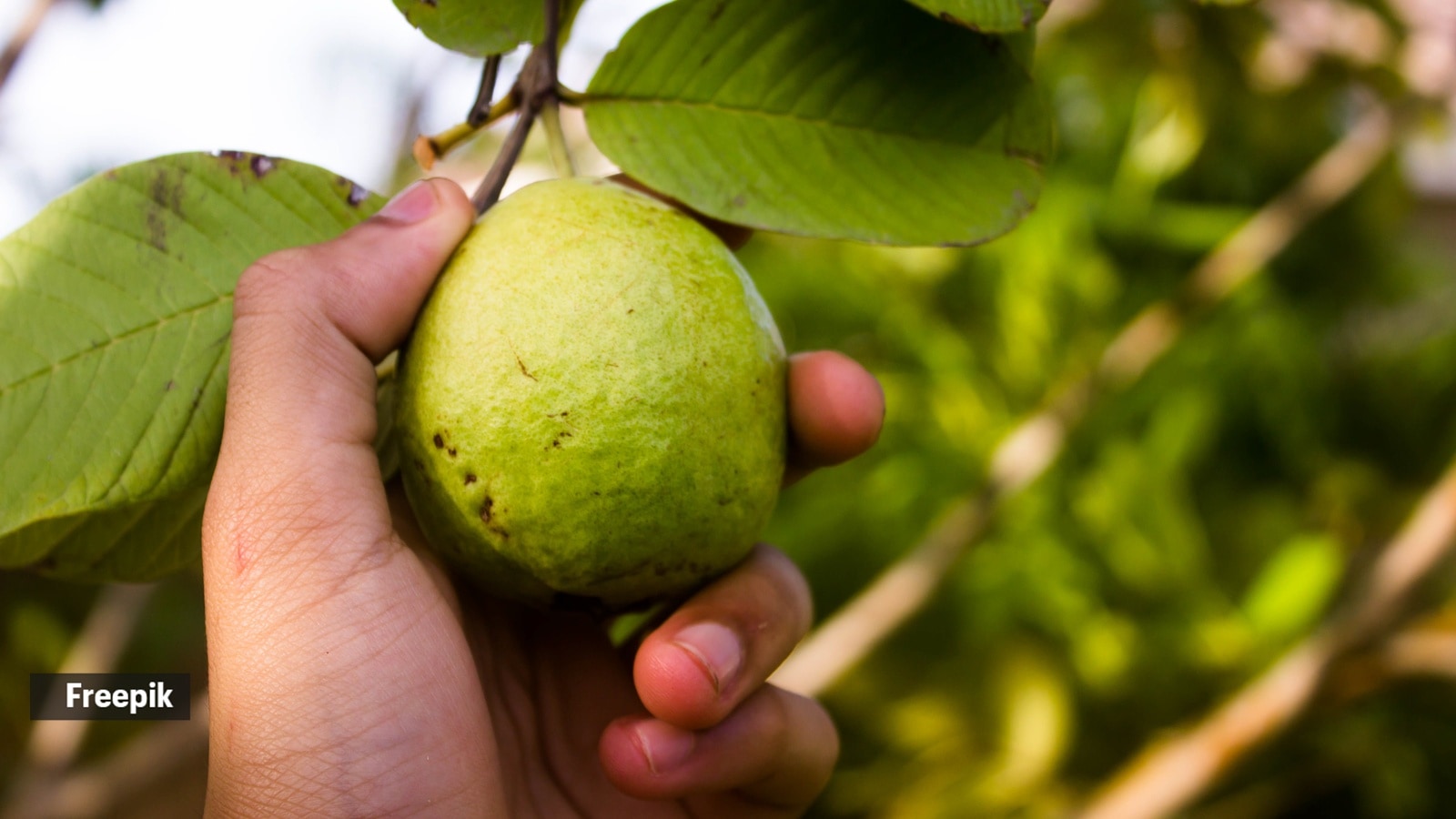📣 For more lifestyle news, click here to join our WhatsApp Channel and also follow us on Instagram
Pink vs white guava: Which is better for diabetics?
Eating the whole guava with skin (after washing thoroughly) maximizes fibre intake and prolongs post-meal satiety, reducing unhealthy snacking tendencies.
 Should you have both the pink and white part of guava? (Source: Freepik)
Should you have both the pink and white part of guava? (Source: Freepik)Guava, often called a “diabetic-friendly fruit,” is rich in dietary fibre, vitamin C, antioxidants, and low in glycemic index — making it ideal for maintaining stable blood sugar levels. The seeds of the fruit, generally found in shades of either pink or white, also add fibre, which supports gut health. But in case you are wondering which one’s better for you, we have got you covered.
Edwina Raj, Head of Services – Clinical Nutrition & Dietetics, Aster CMI Hospital, Bengaluru, said both pink and white guavas are healthy and important for overall nutrition.
“The pink guava is rich in antioxidants like lycopene, which helps protect the heart and reduces the risk of cancer. It also has more vitamin A, which gives the fruit its bright colour. Its white cousin, on the other hand, contains more vitamin C and fibre, which help boost immunity and improve digestion,” mentioned Raj.
Dr Rashi Agrawal, Consultant, Endocrinology, Kokilaben Dhirubhai Ambani Hospital, Navi Mumbai, told indianexpress.com that both pink and white guava have exceptional nutritional and metabolic benefits, even though they differ slightly in nutrient profile. Here’s a detailed breakdown of both:
White
The white one (typically closer to the skin and seeds) is higher in dietary fibre, which slows glucose absorption, improves satiety, and aids digestion. Fibre also helps regulate bowel movements and lowers LDL cholesterol – important for people with diabetes or metabolic syndrome. Eating the whole guava with skin (after washing thoroughly) maximises fibre intake and prolongs post-meal satiety, reducing unhealthy snacking tendencies.
 Guava is known as a diabetic friendly fruit (Source: Freepik)
Guava is known as a diabetic friendly fruit (Source: Freepik)
Pink
The pink, on the other hand, owes its colour to the antioxidant lycopene, a carotenoid known to protect against oxidative stress, cardiovascular disease, and even certain cancers. Lycopene and vitamin C together neutralise free radicals that damage pancreatic and vascular tissues, helping preserve insulin function and endothelial health. The pink pulp also has slightly more natural sweetness, but its impact on glucose levels is minimal due to the balancing effect of fibre.
From an endocrinological standpoint, Dr Agrawal said that consuming the entire fruit – both pink and white – offer the best combination of fibre, antioxidants, vitamins, and minerals. It supports metabolic balance, reduces postprandial glucose excursions, and enhances cellular protection.
Which is better for diabetics?
For diabetics, Raj clarified that pink guava is generally better.
“Pink guavas have more fibre, which helps slow down sugar absorption in the blood, keeping blood sugar levels stable. They also contain more antioxidants, like lycopene, which help protect the heart and improve overall health. White guavas, on the other hand, have slightly less fibre and antioxidants, but are still good in moderation,” she explained.
For diabetics, she recommended, it is best to eat 1–2 guavas a day as a snack, preferably raw, and avoid adding sugar. Including guavas in a balanced diet with vegetables, whole grains, and proteins can help manage diabetes effectively.
So, instead of focusing on one colour, it’s best to eat the full fruit for maximum health benefits.
DISCLAIMER: This article is based on information from the public domain and/or the experts we spoke to. Always consult your health practitioner before starting any routine.
📣 For more lifestyle news, click here to join our WhatsApp Channel and also follow us on Instagram



- 01
- 02
- 03
- 04
- 05























